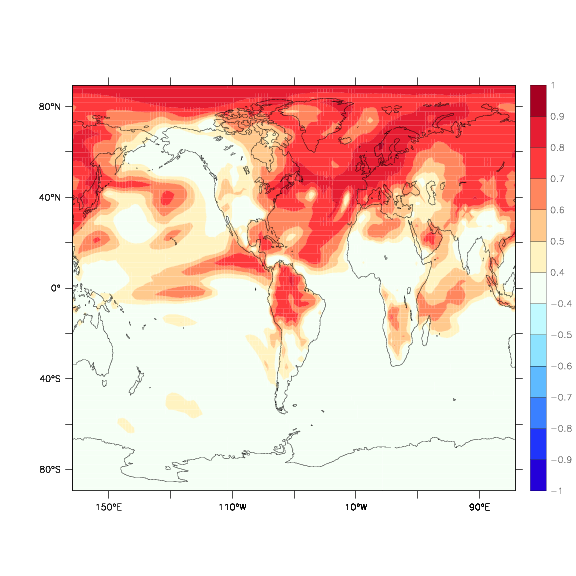Multicentennial variability of the Atlantic Meridional Overturning Circulation and its climatic influence in a 4000 year simulation of the GFDL CM2.1 climate model.
Thomas L. Delworth and Fanrong Zeng. Geophysical Research Letters, 39, L13702, DOI:10.1029/2012GL052107.
In order to more confidently predict future climate change, it is important to be able to distinguish internally generated natural climate variability from changes that are generated by external forcings to the system, such as from changing greenhouse gases or aerosols. While we learn a great deal about natural climate variability through an analysis of the observed climate record, we must be careful to remember that the observed climate system has been influenced by changing radiative forcings over the past decades and centuries, including from changing greenhouse gases, aerosols, and solar variations. Therefore, to complement such observational analyses, we analyze long simulations of climate models to better estimate how the climate system would vary naturally in the absence of external forcing changes.
In this paper we analyze the output from a 4000 year simulation of the GFDL CM2.1 climate model that is run as a “control simulation”. A “control simulation” uses the same radiative forcing from one year to the next, such that model simulated climate variations arise solely from processes internal to the climate system. Many independent analyses of the CM2.1 climate model have shown that its simulation is among the most realistic of any model in use. This lends greater confidence to the results of studies using this model.
We show that there is a distinct multicentennial pattern of Northern Hemisphere climate variations in this model, associated with hemispheric scale warming and cooling, as well as northward and southward shifts of the tropical rainfall belts. These shifts appear to be driven by centennial scale changes in the poleward ocean heat transport, mainly in the Atlantic Ocean.
These results suggest that internal climate variability, driven by changes in ocean circulation, can create substantial hemispheric climate variations on centennial and longer time scales. Such processes may have played a role in observed variations in the climate record, such as the Medieval Warm Period.
This study contributes to NOAA’s goal “To understand and predict changes in climate, weather, oceans, and coasts” by improving our understanding of the natural variability of the climate system. This leads to an improved assessment of the role of natural variability and changing greenhouse gas forcing in explaining past climate changes, and predicting future change.
 |
| FIGURE: This map shows the pattern of multicentennial variability of near-surface air temperature in the GFDL CM2.1 model. The color shading indicates the correlation coefficients of near-surface air temperature at each grid point versus the time series of Northern Hemisphere mean extratropical temperaure. The red colors indicate areas where the local temperature varies in concert with hemispheric temperature. Note the larger values over the Atlantic, European and Arctic sectors. |
Click here to go to my homepage.
Click here to find out more about our Group’s research.


